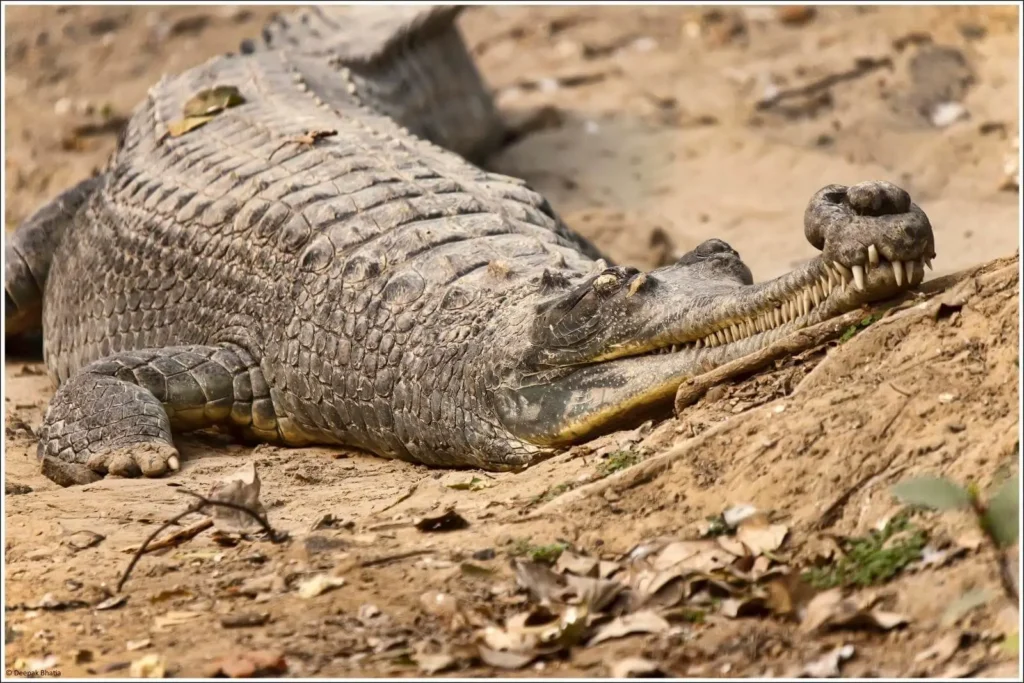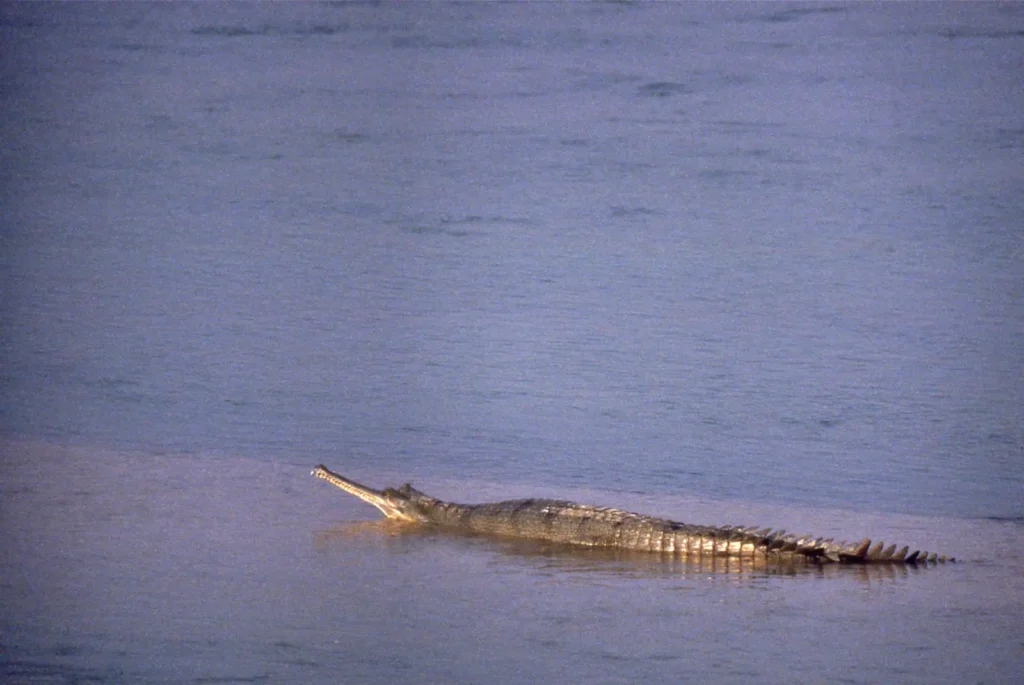Gangetic Gavial (Gavialis gangeticus) is a unique crocodile-like predator, which is different narrow, long jaw and a specialty in fishing.
Once this species inhabited almost all major rivers in South AsiaBut today it turned out to be on the verge of extinction due to habitat loss, water pollution, and overfishing.
This majestic representative of ancient reptiles it has existed for more than 40 million yearsIt has survived climate change and human civilization, but now needs to be protected so as not to disappear forever.
Let's find out all about the last dragon of india - its structure, behavior, ecological role and current state of the population.

Scientific classification
🔬 Taxonomy of the Gangetic Gavial:
✔ The Kingdom: Animals (Animalia)
✔ Type: Chordal (Chordata)
✔ Class: Reptiles (Reptilia)
✔ Row: Crocodile-like (Crocodylia)
✔ Family: Gavialu (Gavialidae)
✔ Gender: Gavials (Gavialis)
✔ View: Gangetic Gavial (Gavialis gangeticus)
📌 Interesting!
Gangetic gavial – the only modern representative of the Gavialov familywhich makes it a true "living fossil".
Origin and evolution
🦕 When did gavials appear?
* Their ancestors existed from above 50 million years ago.
* Gavials once were widely distributed, but most of the species are extinct.
• Gavialis gangeticus – the last member of your familywhich has survived to this day.
📌 Interesting!
Scientists believe that the Gavials used to inhabit even the most remote areas of the world. Europe and North Africabut climate change has forced them to retreat to the rivers of South Asia.
Appearance and features
💠 What does the Gangetic Gavial look like?
• Length: 4-5 m, but some males can reach up to 6-7 m.
• Weight: 150-250 kg.
• Body: Elongated, streamlined, adapted for fast swimming.
• Jaw: Narrow, up to long 1 m, with a large number of sharp teeth (up to 110 pieces).
• Color scheme: From olive green to gray-brown.
• "Beautiful" - a unique growth on the end of the nose in males, which is used for sound communication.
📌 How is it different from other crocodiles?
✅ Narrow jaw adapted for catching fish
✅ It is not adapted to walking on land-it moves only in reptiles
✅ Has a unique growth on the nose (males only)
Range and habitat
🌍 Where does the Gangetic gavial live?
Previously, it was found in rivers:
✅ Ganges
✅ Ind
✅ Brahmaputra
✅ Mahanadi
But now it can only be found in remote areas of India and Nepal.
🔹 What places of residence does he choose?
✅ Slow moving rivers with clear water
✅ Areas with sandy banks for nesting
✅ Deep water bodies with lots of fish
📌 Interesting!
Unlike other crocodiles, gaviales avoid swamps and lakes, preferring large rivers.

Lifestyle and behavior
🔹 Hunting and nutrition
Gangetic gavial – specialized riboid, which almost does not hunt large animals.
🍽 What does gavial eat?
✅ Fish (his main meal)
✅ Shellfish and crustaceans
✅ Juveniles can feed on insects
📌 How does he hunt?
* Uses sharp teethto instantly grab a slippery fish.
* Thanks to flexible neck it can move its head quickly in water.
* Hunts mainly in evening and night time.
📌 Interesting!
Gavials – the best swimmers among all crocodiles thanks to its long tail and narrow body.
Reproduction and development
💡 How does gavial reproduce?
* Mating season – December to March.
* The female lays eggs 30-60 eggs into the sandy riverbanks.
* Incubation continues 70-90 days.
* Small gavials hatch in length 30 cm.
📌 Interesting!
Unlike other crocodiles, female gaviales they do not tolerate cubs in their mouthsbecause their jaws are too narrow.

Threats to the species and their protected status
⚠ What threatens gavial ganga?
• River pollution
• Loss of the natural environment through the dams
• Overfishing
• Random fishing in Fishing Cities
🛡 Security status:
, Enabled in IUCN Red List with the status "In critical danger" (CR).
✅ Protected laws of India and Nepal.
✅ Recovery programs help to increase the population.
📌 Interesting!
In India, there are special captive gavial breeding programs for further release into the wild.
Conclusion
Gangetic gavial – amazing reptile, which is the last member of your family.
💡 Basic facts:
✔ It has the longest and narrowest jaw among crocodyliformes
✔ It lives exclusively in rivers and feeds almost exclusively on fish
✔ It is on the verge of extinction and needs protection
📢 Gangetic gavial is a real living dinosaur of rivers, and only human efforts can save it from extinction!